Multifocal atrial tachycardia is a complex heart rhythm disorder. Learn about its causes, symptoms, and treatments to protect your cardiovascular health.
What are the main causes of multifocal atrial tachycardia?
- Chronic lung diseases like COPD often trigger multifocal atrial tachycardia by increasing stress on the atria and disrupting normal heart rhythm.
- Electrolyte imbalances, particularly low potassium or magnesium, contribute to abnormal electrical activity leading to premature atrial firing and arrhythmia.
- Heart conditions such as coronary artery disease or heart failure can disturb atrial function, increasing susceptibility to multifocal atrial tachycardia episodes.
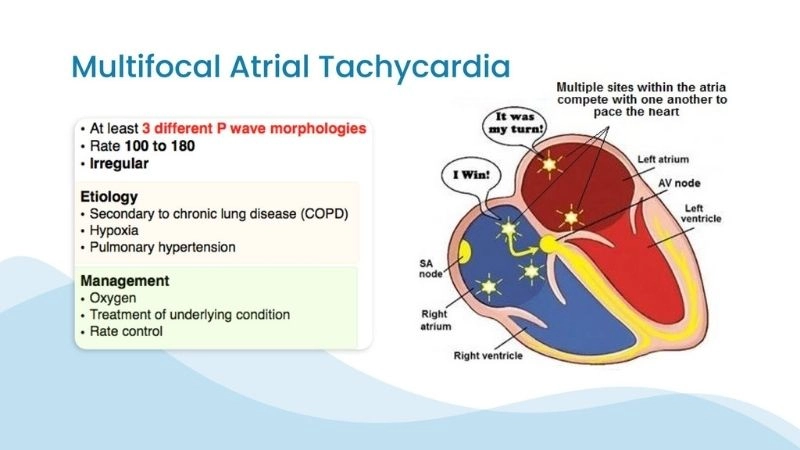
Multifocal Atrial Tachycardia Symptoms show irregular rhythm
>>> Understand more about: Catecholaminergic Polymorphic Ventricular Tachycardia
Key symptoms of multifocal atrial tachycardia to watch for
- Palpitations or rapid, irregular heartbeat episodes may occur suddenly, often accompanied by noticeable chest discomfort or lightheadedness.
- Shortness of breath develops when the irregular rhythm reduces cardiac efficiency, limiting oxygen delivery to the body.
- Fatigue and exercise intolerance are common, as persistent abnormal rhythm weakens overall heart function and energy levels.
How can you prevent multifocal atrial tachycardia effectively?
- Manage chronic conditions like COPD, hypertension, and heart disease through regular checkups, prescribed medications, and consistent lifestyle modifications.
- Maintain electrolyte balance with a healthy diet, adequate hydration, and medical monitoring to prevent arrhythmia-inducing deficiencies.
- Avoid excessive stimulants such as caffeine, nicotine, and alcohol, as they increase the risk of irregular atrial activity and tachycardia episodes.
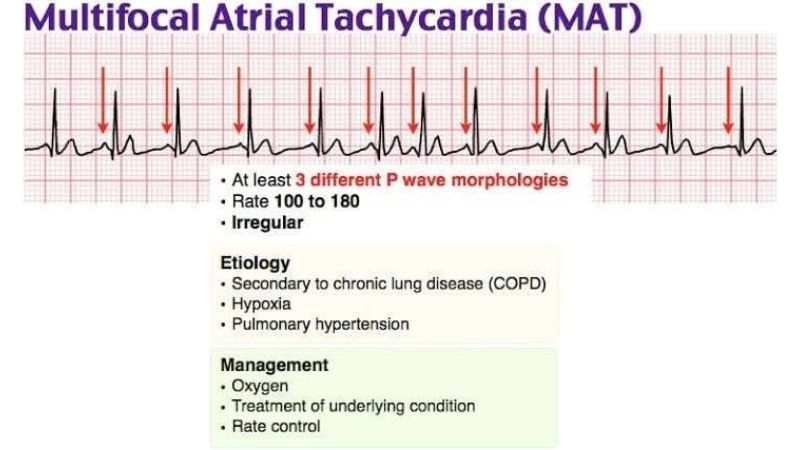
Multifocal Atrial Tachycardia Treatment restores heart balance
>>> Understand more about: Understanding atrioventricular reentrant tachycardia (AVRT)
Images visual examples of multifocal atrial tachycardia
Multifocal atrial tachycardia is an irregular heart rhythm often linked with lung disease. ECG images show distinct P-wave shapes, reflecting multiple atrial firing sites.
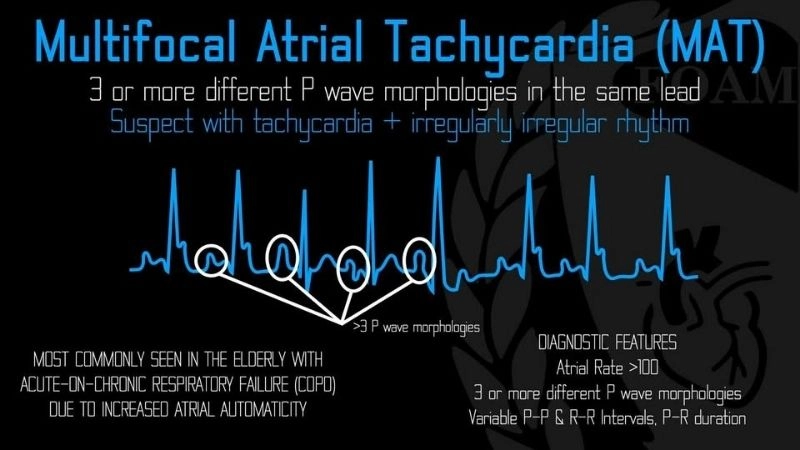
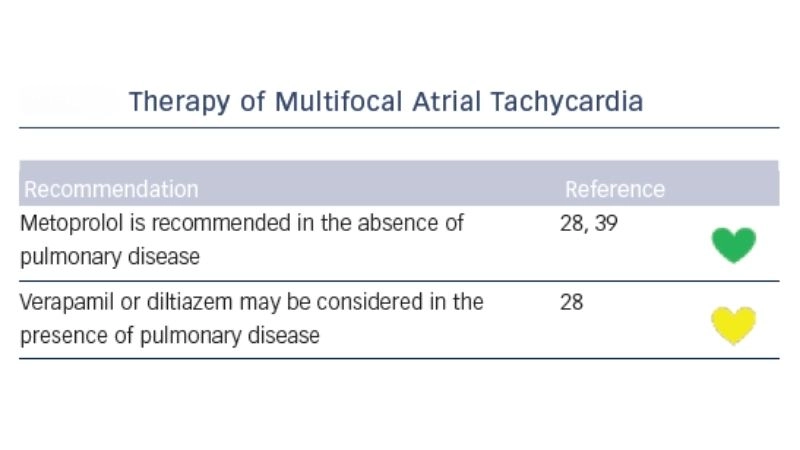
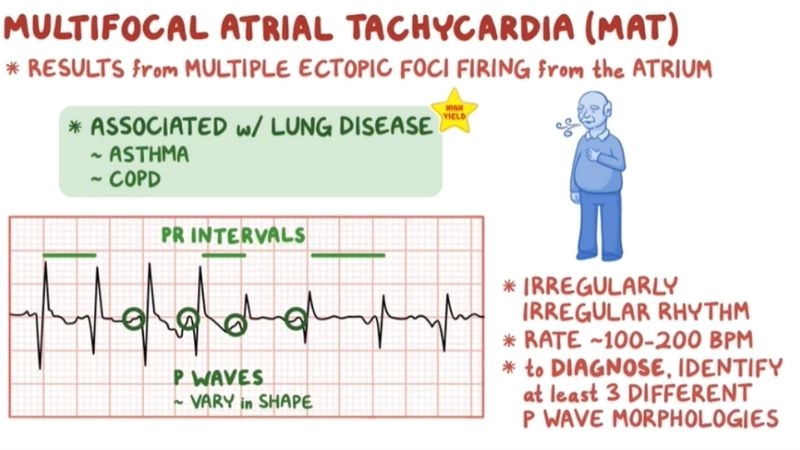
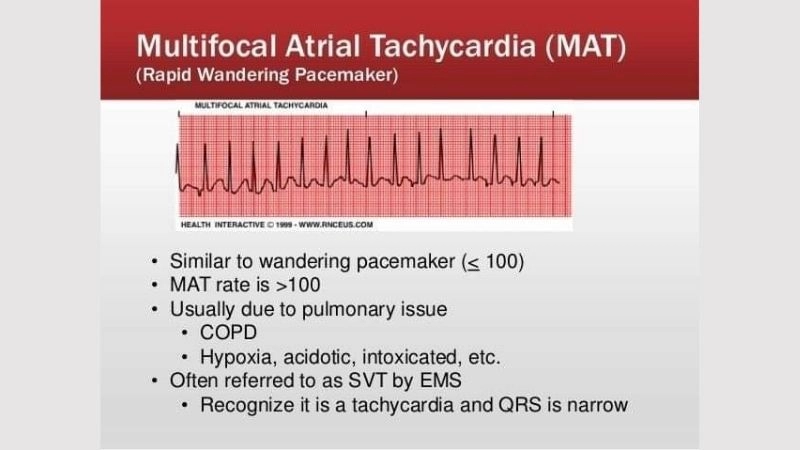
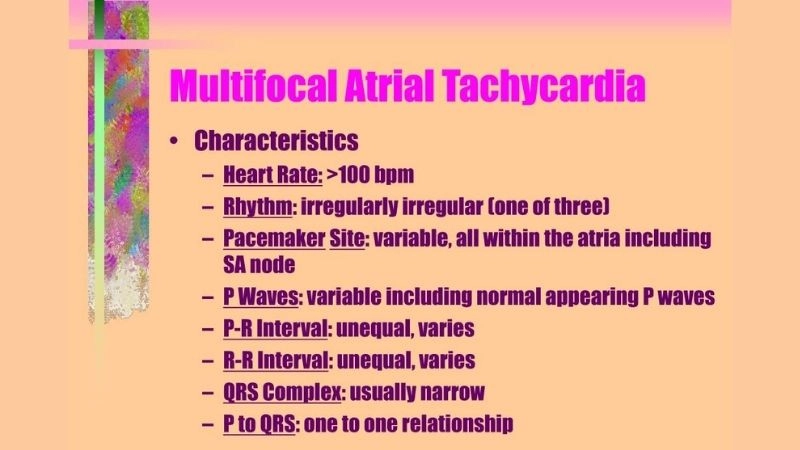
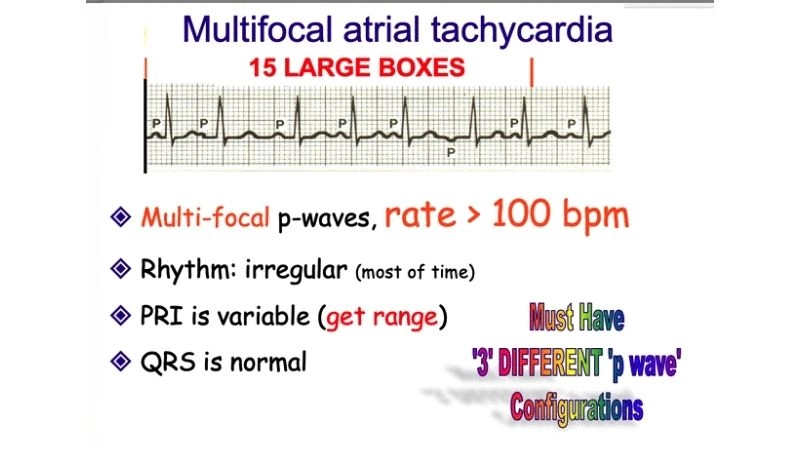
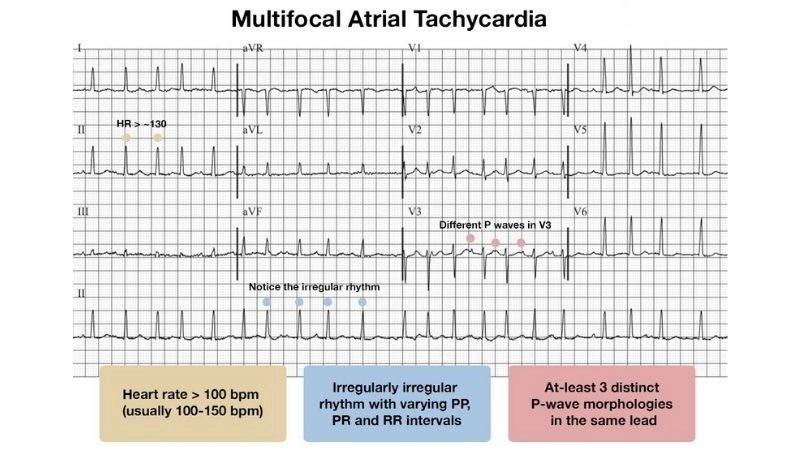
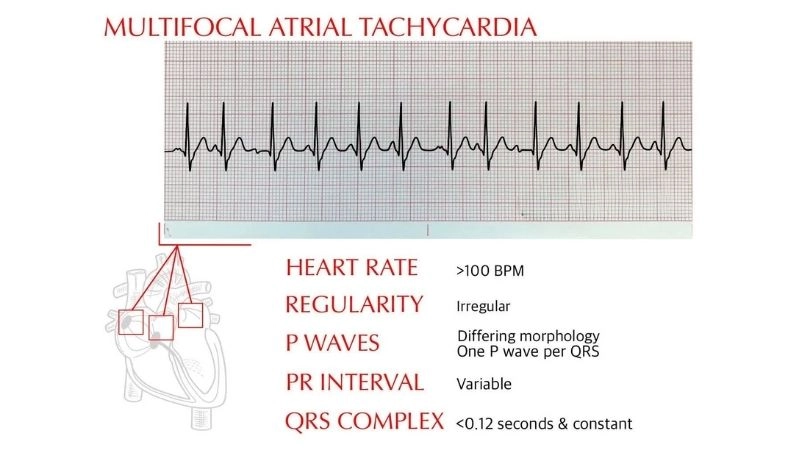
>>> Understand more about: Atrioventricular Nodal Reentrant Tachycardia (AVNRT)
Managing multifocal atrial tachycardia requires lifestyle changes, medical care, and awareness of risks. Stay informed to improve long-term heart health.




